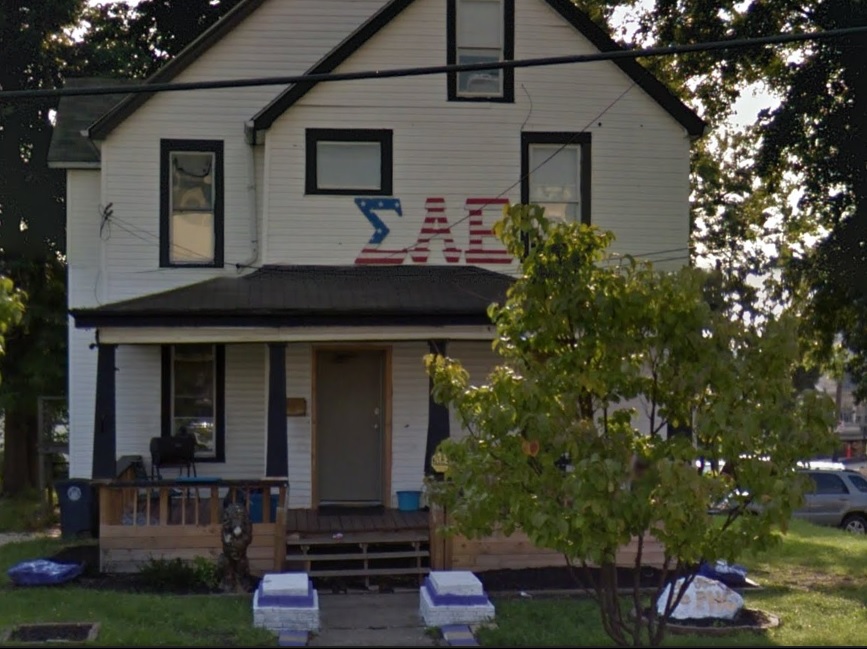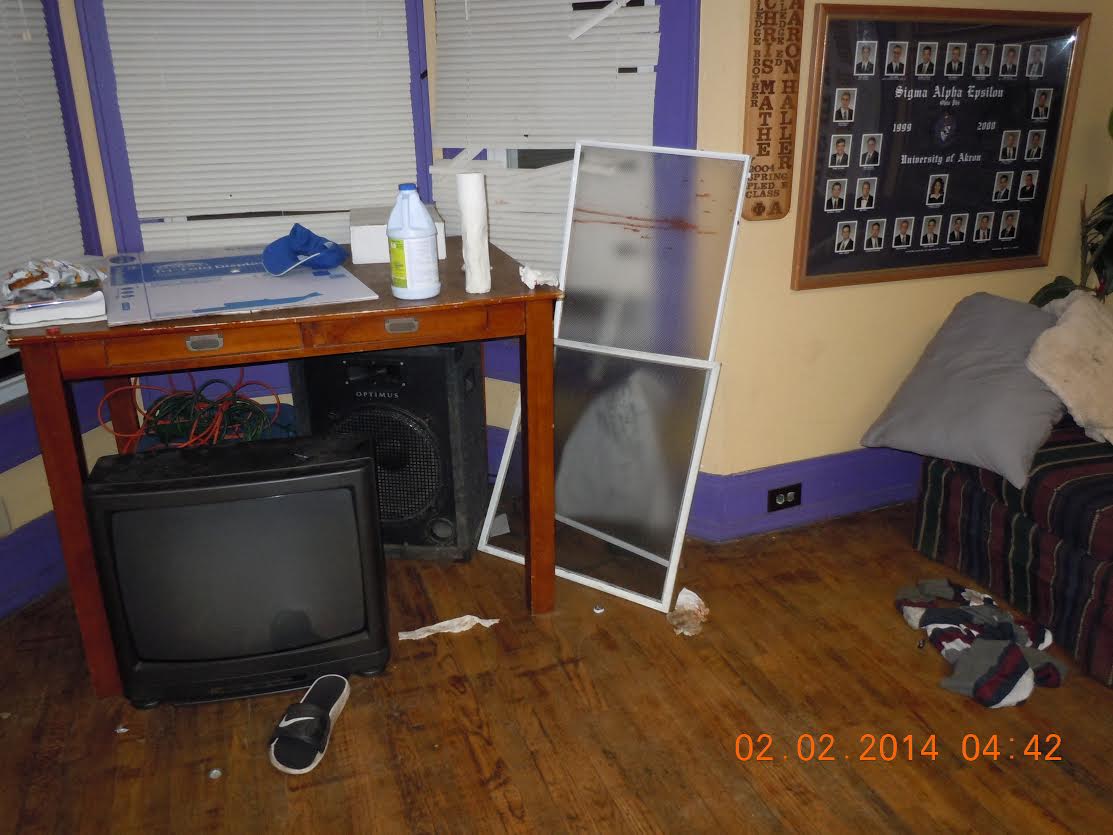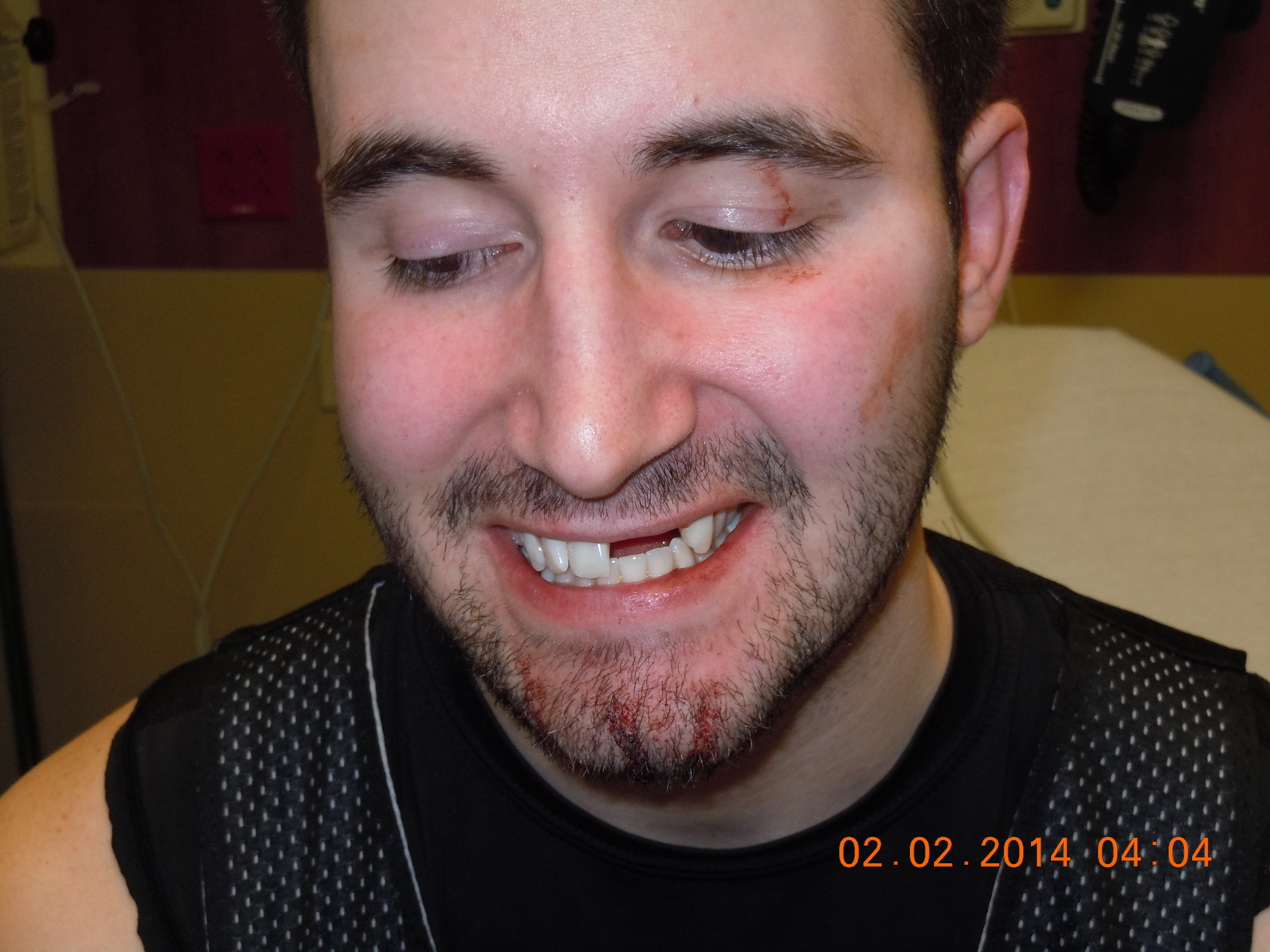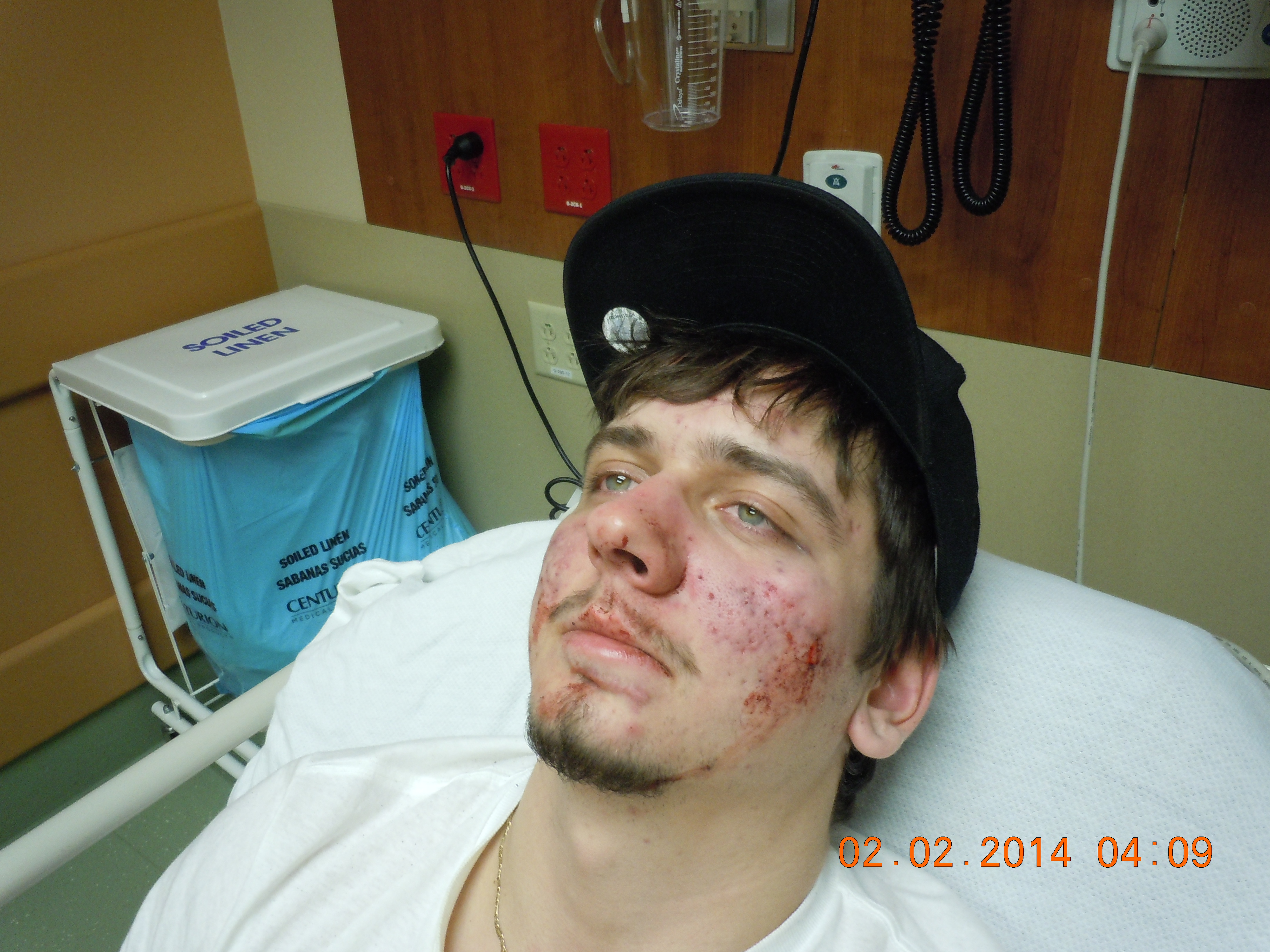A black University of Akron student is suing the school’s chapter of Sigma Alpha Epsilon claiming members of the fraternity attacked him during a Super Bowl party at their house, calling him N***er and *N***a while assaulting him.
Gabriel Dorsey, 19, was arrested after the fight and claims that the frat brothers lied about what happened because of racial bias. Dorsey is also suing the University of Akron police officers involved in his arrest. Dorsey was eventually found not guilty of the charges.
Dorsey is claiming false arrest as well as conspiracy, assault, battery and malicious prosecution by the SAE brothers, “in their abuse of process and malicious and racially motivated prosecution including but limited to racial bias, hate and institutional practices and customs.”
The lawsuit comes a week after a video showing members of the University of Oklahoma chanting racist songs on a bus went viral, leading to the chapter being disbanded and the expulsion of two students.
Members of the fraternity are seen singing, “there will never be a n***er SAE,” in the video, filmed on a bus en route to a party. The chant, which has drawn disgust worldwide and led to the shutdown of the fraternity’s University of Oklahoma chapter, continues “you can hang them from a tree, but they’ll never sign with me.”
Here’s what you need to know:
1. Dorsey Wanted to Be a Member of the Fraternity

(Google Street View)
In the federal lawsuit, his attorney, Walter Madison, says Dorsey wanted to join SAE because his childhood friend, Larry Goodman, was a member. Goodman is also black, according to the lawsuit.
They were at a party the frat house at about 1:30 a.m. when the fight started. The aftermath of the fight was caught on the house’s surveillance cameras, showing Dorsey being thrown out of the house and then in a confrontation with the members. Dorsey claims he was hit first and was attacked by a “score” of frat brothers after defending himself.
Dorsey was invited to the Super Bowl party by Goodman and was also accompanied by his girlfriend, according to the lawsuit. Dorsey claims one of the fraternity members, Nicholas Weisand, was touching his girlfriend “in a sexually inappropriate manner.” Dorsey confronted Weisand and alleges Weisand became belligerent and punched him. Dorsey says he defended himself and a “score” of SAE members attacked him. Dorsey said he was knocked to the ground and feared for his life and safety.
Dorsey accuses another frat brother, Brandon McWayne, of leading the “outnumbered attack,” delivering multiple blows. Dorsey says he was kicked and struck while on the ground while defenseless as the SAE members yelled racial epithets at him.
He said he suffered hand and “closed head” injuries.
Dorsey is seeking damages in excess of $2 million, according to the complaint.
Read the full complaint here:
2. The Fraternity Says Dorsey Was the Aggressor

A photo taken during the investigation into the fight shows the inside of the Sigma Alpha Epsilon house. (University of Akron Police)
The fraternity’s president responded to the lawsuit in an email to Cleveland.com. Brandon Johnson said Dorsey “violently assaulted” two of the fraternity brothers and denied that any racial slurs were said, according to the report.
In the police report of the incident, which was released to local media by the university, fraternity members allege Dorsey was not invited to the party. Weisand told police he was confronted by the uninvited man and told him to leave. Weisand said Dorsey then punched him in the mouth. Police said McWayne tried to intervene and was hit in the nose by Dorsey. According to the report, other members of the fraternity were then able to get Dorsey and two unidentified black males out of the house.
Weisand had two teeth knocked out and other head injuries. McWayne was treated for a broken nose and possible concussion.
But Dorsey alleges in his lawsuit that the fraternity members’ story was manufactured to implicate him, including falsely reporting two additional unidentified black males were his accomplices. Dorsey says he and Goodman were the only black males at the party at the time of the fight. He alleges that officers investigating the assault didn’t do so diligently. He says they didn’t look at the surveillance video.
In a statement, the university said:
Although the University has not yet been served with a copy of the lawsuit, the documents we provided to the media thoroughly detailing the police investigation and hearing of evidence speak for themselves.
The university released a set of public records detailing the University of Akron Police’s investigation and findings that led to Dorsey’s arrest, including the transcript of a disciplinary hearing conducted by an independent hearing officer that found him responsible for the felonious assault and led to his suspension. He was then charged by the Summit County grand jury and prosecuted, where he was found not guilty by a jury. His suspension was lifted and Dorsey returned to campus, the university said.
Included in the public records were photos from the scene, as well as photos of Weisand and McWayne:

Nicholas Weisand (University of Akron Police)

Brandon McWayne (University of Akron Police)
3. Dorsey’s Friend Says He Left the Frat Because of ‘Racist Behavior Towards African-Americans’
The complaint states that Goodman left the fraternity because of SAE’s “culture, custom and institutional practice of racist behavior towards African-Americans.” Goodman said he recalls times that SAE members “casually” used the words “n***er” and “n***a” in his presence toward African-Americans.
Goodman alleges, according to the lawsuit, that SAE has a “practice of disliking African-Americans within the Akron chapter as well as elsewhere.”
But Johnson, the fraternity’s president, said Goodman was voted out of the fraternity because of poor grades, among other reasons. He told Cleveland.com:
This member was also removed because of his lack of attendance at chapter events including philanthropy and community service, and because of his inability to meet financial obligations. In short, the former member was removed because he did not live up to our creed, ‘The True Gentlemen.’
4. Dorsey Says He Was Threatened on Social Media After the Fight

(YouTube)
In the complaint, Dorsey’s attorney says his client was threatened on social media and in phone messages, including messages calling him racial slurs.
Dorsey was expelled from Akron and all Ohio universities as a result of the felonious assault charges pressed against him. He was allowed to return to the university this year after being found not guilty.
According to the lawsuit, Weisand admitted during a university disciplinary hearing that SAE members were “pissed off” after the fight and took to social media attacking Dorsey.
Dorsey’s attorney says his client “missed one year of education and was humiliated.”
5. The Oklahoma Incident Has Put SAE in the Spotlight

(Twitter)
A source at Oklahoma told Heavy.com that Sigma Alpha Epsilon does not have any black members. The source said the frat had one pledge this year who was black, but he did not become a member.
Oklahoma’s KFOR reports that the last black member for SAE at OU was 14 years ago and named William Bruce James II.
Sigma Alpha Epsilon (ΣΑΕ, also SAE) was founded at the University of Alabama in 1856 and is now one of the largest Greek-letter social college fraternities in North America. Two of its founders were Noble Leslie DeVotie and Nathan Elams Cockrell. Both were part of the Confederacy in the Civil War, and DeVotie was the first man to lose his life in the Civil War after accidentally drowning.
According to the history of SAE on the fraternity’s official website:
Founded in a time of intense sectional feeling, Sigma Alpha Epsilon confined its growth to the southern states. By the end of 1857, the fraternity numbered seven chapters. Its first national convention met in the summer of 1858 at Murfreesboro, Tennessee, with four of its eight chapters in attendance. By the time of the outbreak of the American Civil War in 1861, fifteen chapters had been established.
A French Wikipedia page alludes to a possible KKK past:
[Co-founder] Wade Foster served under Confederate General (and Ku Klux Klan founder) Nathan Bedford Forrest during Civil War. Some controversy exists regarding the post Civil War activities of some of the founders. It was speculated that many of the early members of were indeed members of the KKK. To be sure, 6 of the 8 founders served in the Confederate Army.
KKK ties are not mentioned on the English version of the SAE page.
However, SAE has had documented trouble with racial discrimination in the recent past.
The New York Times reports that in 1982 members at the University of Cincinnati got in trouble for a racially demeaning party “celebrating” Martin Luther King Jr.’s birthday
Huffington Post reports that in 2013 SAE members at Washington University in St. Louis got suspended for singing racist remarks at black students. Huffpo also reports that in 2014 University of Arizona SAE members were suspended, this time for harassing Jewish students, including using a Hitler salute.
